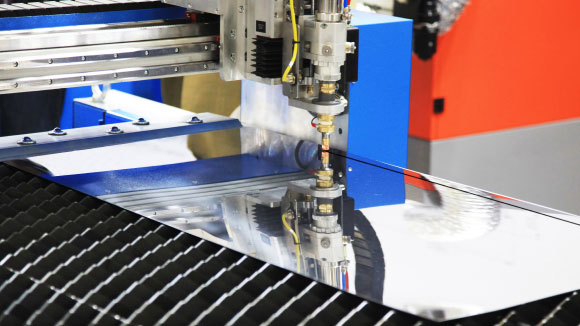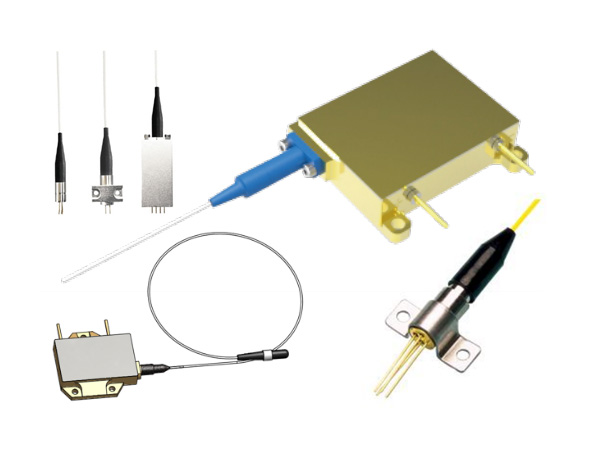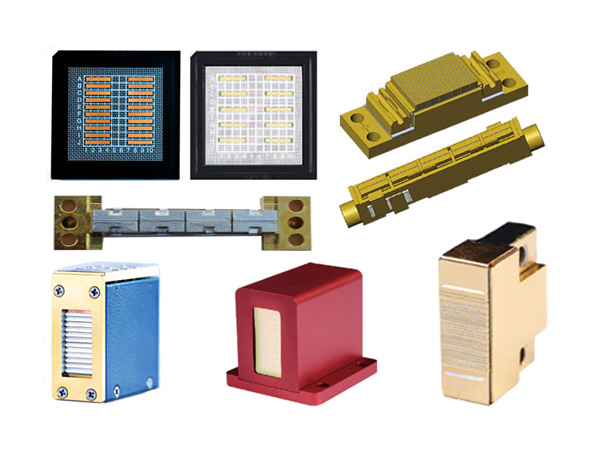How Laser Cutting Machines Reshape Metal Foil Processing in 2025: 99% Yield Breakthroughs and $7.3B
In a Shanghai battery factory, a 6μm copper foil strip glides through a laser processing zone at 15 meters/minute. Instead of metal debris, ultraviolet laser beams dance across the surface—creating 0.02mm-wide cuts with mirror-smooth edges and under 5μm heat-affected zones. This production line recently achieved 99.2% electrode tab yield, saving $4.2 million annually.
Laser cutting technology is revolutionizing metal foil processing with micron-level precision. By 2025, ultrafast laser equipment costs have dropped 40% from three years ago, driving adoption in ultra-thin foil processing from 15% (2023) to 25%. The global laser cutting machine market is expanding concurrently, projected to grow at a 6.5% CAGR from $4.2 billion in 2024 to $7.3 billion by 2034.
China's market demonstrates even stronger growth—laser cutting equipment sales reached ¥36.85 billion in 2024 and are expected to exceed ¥40 billion in 2025. This momentum stems from stringent precision requirements in new energy batteries, 5G communications, and medical devices. As copper foils thin to 0.006mm, traditional methods face insurmountable barriers: mechanical cutting produces burrs while chemical etching wastes material.

1. Technical Bottlenecks and Laser Breakthroughs
Metal foils (0.005-0.2mm thick) present three critical challenges in advanced manufacturing:
Burr formation: Mechanical die-cutting exceeds 30% burr incidence on foils <0.05mm, increasing short-circuit risks in batteries by 40%
Material waste: Chemical etching processes suffer 25% material loss rates, limiting copper foil utilization to ~60%
Thermal damage: Conventional lasers create >50μm heat-affected zones, reducing biocompatibility of medical implants
Laser cutting overcomes these through non-contact processing and precise energy control. For 6μm battery electrode foils, 355nm UV lasers achieve triple breakthroughs:
Kerf width reduced to 20μm with <1% burr rate
Material utilization increased from 60% to 85%
Processing speed reached 15m/min—5x faster than chemical etching
Economic Impact: A leading battery manufacturer implemented ultrafast lasers to boost electrode tab yield from 85% to 99.2%, adding 20 million pieces/year production capacity per line while reducing costs by 30%. This confirms laser technology's transition from "optional" to "essential.
2. Core Technologies and Equipment Selection
Laser cutting of metal foils relies on precise photothermal energy control—focusing beams into micron-scale spots to vaporize material instantaneously, assisted by gas to remove residue. Key 2025 laser technologies show differentiated advantages:
Table: Laser Technology Parameters for Metal Foil Processing
| Laser Type | Wavelength | Heat-Affected Zone | Thickness Range | Optimal Applications | 2025 Power Advancement |
| UV Laser | 355nm | ≤10μm | 0.01-0.1mm | Copper foil micro-drilling, FPC cutting | 300W pulsed modulation |
| Picosecond | 1064nm | 6-7μm | 0.05-0.2mm | Titanium alloy,aerospace parts | 24kW high-power systems4 |
| Femtosecond | 515nm | ≤1μm | 0.005-0.05mm | Medical stents, graphene films | <1ps ultra-short pulses |
Key Technical Advances:
Cold Processing: UV lasers limit thermal diffusion to <5μm, while pulse modulation increases absorption on high-reflectivity copper (>80%) to 65%
High-Power Innovation: TRUMPF's TruDisk 24001 (2022) achieves 24kW output, cutting 20mm metal plates at triple previous efficiency
Ultrafast Precision: Femtosecond pulses (<1ps) enable "cold ablation"—the only viable method for 0.01mm foils at ±1μm precision
Selection Strategy: Match materials to laser types—UV lasers (80-200W) for reflective metals (Cu/Al); picosecond lasers (150-300W) for high-melting-point materials (Ti alloy/stainless steel); femtosecond systems for medical-grade precision.
3. Process Optimization: From Microns to Sub-Microns
Laser cutting quality depends on four parameter interactions, requiring material-specific process databases:
Power Matching Principles
Copper foils: >80% reflectivity → pulsed modulation
Titanium alloys: Melting point 1668℃ → >200W base power
Stainless steel: 0.1mm thickness → 150W continuous wave
Speed and Gas Combinations
0.05mm aluminum: 20m/min + compressed air → 30% efficiency gain
0.1mm stainless steel: 10m/min + 99.99% nitrogen → zero oxidation
Medical titanium: 5m/min + argon shielding → biocompatibility assurance
Focus Positioning
Positive defocus (+0.1mm): Optimal for thin foil penetration
Negative defocus (-0.5mm): Depth control for thicker foils
AI Optimization Case: An electronics manufacturer processing 0.03mm LCP antenna substrates used machine learning to dynamically adjust parameters—cutting time decreased from 2s to 1.2s/piece while defect rate dropped from 5% to 0.3%. This demonstrates how parameter optimization directly boosts economic value.
4. Cross-Industry Applications and Economic Impact
New Energy Batteries: Yield Revolution
Technical breakthrough: UV lasers integrate cutting, forming, and deburring into one step
Economic value: Material utilization rose from 75% to 92%; one manufacturer reduced battery short circuits from 0.8% to 0.05%, saving >$1.5M/year
Capacity upgrade: Electrode tab cutting at 300mm/s enables 500,000 pieces/day per line
5G Communications: High-Frequency Component Fabrication
Flexible PCBs: 300mm/s cutting on 0.025mm PI films with <10μm heat-affected zones, enabling mold-free complex geometries
LCP antennas: ±3μm precision ensures 5G signal stability; prototyping cycles compressed from 72 hours to 4 hours
Cost efficiency: Prototyping costs reduced 90%, supporting consumer electronics' rapid iteration
Medical Devices: Implant Safety Advancements
Cardiac stents: Femtosecond lasers process 50μm-wide nickel-titanium alloy struts with <1μm heat impact, increasing endothelial cell adhesion by 20%
Minimally invasive catheters: 50μm holes on 1mm-diameter tubes with ±5μm positional accuracy, boosting assembly yield from 80% to 97%
Certification: Edge roughness Ra≤0.2μm meets medical standards, reducing thrombosis risk by 35%
Aerospace: Extreme Environment Solutions
Titanium foils: Picosecond-cut 0.05mm components withstand -196℃ liquid nitrogen impact tests without cracking
Satellite components: 3D path planning achieves ±10μm precision on curved surfaces, reducing satellite weight by 15%
Engine combustion tubes: Femtosecond-etched microstructures improve combustion efficiency by 12%
5. 2025 Trends: Intelligent and Green Manufacturing
AI-Driven Flexible Processing
Vision positioning: Automatic defect recognition with real-time path adjustment
Cloud process libraries: Self-optimizing parameters slash complex pattern programming time by 70%
Quality control: AI defect detection achieves 98% accuracy, reducing unplanned downtime by 60%
Low-Carbon Processing
Energy efficiency: Fiber laser cutters consume 40% less power than conventional systems
Fume management: Recycling systems provide 99.5% purification, complying with EU CE PED standards
Renewable integration: Photovoltaic direct-drive systems supply 35% of daytime energy
New Material Frontiers
Graphene films: <5μm kerf widths on 10μm films without damage
CFR composites: Ultrafast lasers enable aerospace applications
Metal-matrix composites: Picosecond lasers overcome delamination issues, improving efficiency by 50%
Market Outlook: The global ultrafast laser market grew at 70.5% CAGR from 2015-2019, dwarfing the 11% industry average. Policy tailwinds accelerate adoption—China's "Dual Carbon" goals list laser cutting in key technologies, with local governments offering up to 30% subsidies1. Driven by technology and policy, the industry is advancing toward its ¥40 billion target. If you want to know more further information, pls click here,
 English
English Français
Français Deutsch
Deutsch euskara
euskara Русский язык
Русский язык Italiano
Italiano Português
Português Nederlands
Nederlands Polski
Polski Greek
Greek Lietuva
Lietuva Türkçe
Türkçe 日本語
日本語 한어
한어 中文
中文 தாமில்
தாமில் فارسی
فارسی हिंदी
हिंदी Tiếng Việt
Tiếng Việt ภาษาไทย
ภาษาไทย Pilipino
Pilipino Indonesia
Indonesia தாமில்
தாமில்





